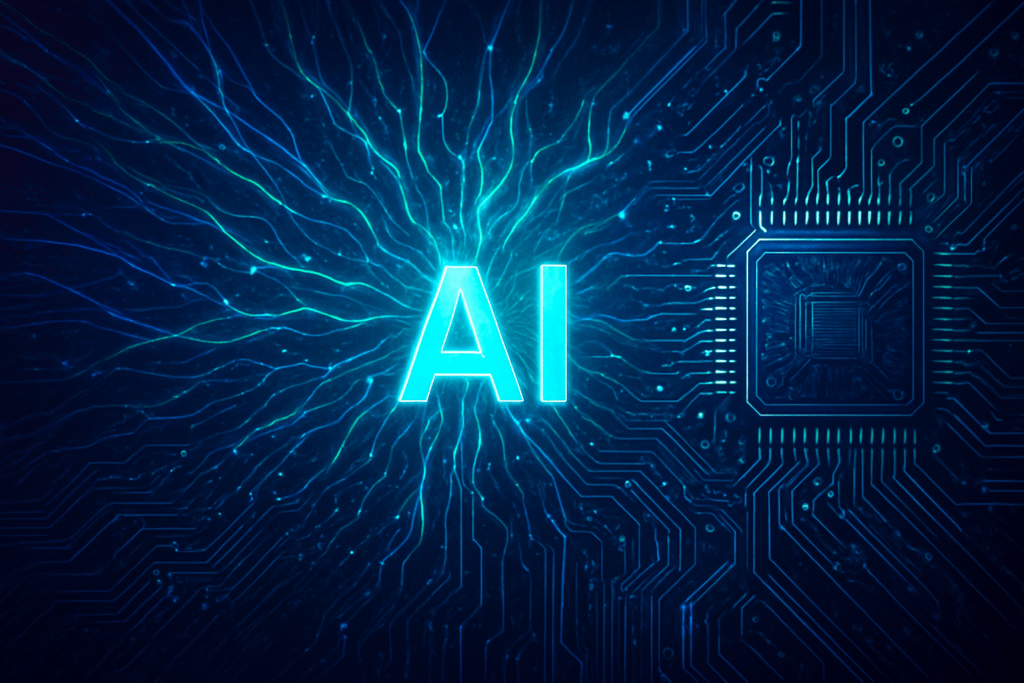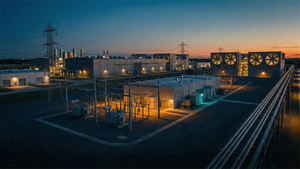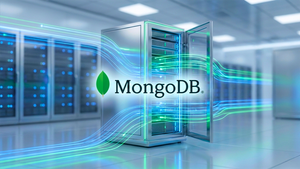
As of November 2025, the semiconductor industry is in the throes of a transformative supercycle, driven almost entirely by the insatiable and escalating demand for Artificial Intelligence (AI) technologies. This surge is not merely a fleeting market trend but a fundamental reordering of priorities, investments, and technological roadmaps across the entire value chain. Projections for 2025 indicate a robust 11% to 18% year-over-year growth, pushing industry revenues to an estimated $697 billion to $800 billion, firmly setting the course for an aspirational $1 trillion in sales by 2030. The immediate significance is clear: AI has become the primary engine of growth, fundamentally rewriting the rules for semiconductor demand, shifting focus from traditional consumer electronics to specialized AI data center chips.
The industry is adapting to a "new normal" where AI-driven growth is the dominant narrative, reflected in strong investor optimism despite ongoing scrutiny of valuations. This pivotal moment is characterized by accelerated technological innovation, an intensified capital expenditure race, and a strategic restructuring of global supply chains to meet the relentless appetite for more powerful, energy-efficient, and specialized chips.
The Technical Core: Architectures Engineered for Intelligence
The current wave of AI advancements is underpinned by an intense race to develop semiconductors purpose-built for the unique computational demands of complex AI models, particularly large language models (LLMs) and generative AI. This involves a fundamental shift from general-purpose computing to highly specialized architectures.
Specific details of these advancements include a pronounced move towards domain-specific accelerators (DSAs), meticulously crafted for particular AI workloads like transformer and diffusion models. This contrasts sharply with earlier, more general-purpose computing approaches. Modular and integrated designs are also becoming prevalent, with chiplet-based architectures enabling flexible scaling and reduced fabrication costs. Crucially, advanced packaging technologies, such as 3D chip stacking and TSMC's (NYSE: TSM) CoWoS (chip-on-wafer-on-substrate) 2.5D, are vital for enhancing chip density, performance, and power efficiency, pushing beyond the physical limits of traditional transistor scaling. TSMC's CoWoS capacity is projected to double in 2025, potentially reaching 70,000 wafers per month.
Innovations in interconnect and memory are equally critical. Silicon Photonics (SiPho) is emerging as a cornerstone, using light for data transmission to significantly boost speeds and lower power consumption, directly addressing bandwidth bottlenecks within and between AI accelerators. High-Bandwidth Memory (HBM) continues to evolve, with HBM3 offering up to 819 GB/s per stack and HBM4, finalized in April 2025, anticipated to push bandwidth beyond 1 TB/s per stack. Compute Express Link (CXL) is also improving communication between CPUs, GPUs, and memory.
Leading the charge in AI accelerators are NVIDIA (NASDAQ: NVDA) with its Blackwell architecture (including the GB10 Grace Blackwell Superchip) and anticipated Rubin accelerators, AMD (NASDAQ: AMD) with its Instinct MI300 series, and Google's (NASDAQ: GOOGL) Tensor Processing Units (TPUs) like the seventh-generation Ironwood TPUs. These TPUs, designed with systolic arrays, excel in dense matrix operations, offering superior throughput and energy efficiency. Neural Processing Units (NPUs) are also gaining traction for edge computing, optimizing inference tasks with low power consumption. Hyperscale cloud providers like Google, Amazon (NASDAQ: AMZN), and Microsoft (NASDAQ: MSFT) are increasingly developing custom Application-Specific Integrated Circuits (ASICs), such as Google's Trainium and Inferentia, and Microsoft's Azure Maia 100, for extreme specialization. Tesla (NASDAQ: TSLA) has also announced plans for its custom AI5 chip, engineered for autonomous driving and robotics.
These advancements represent a significant departure from older methodologies, moving "beyond Moore's Law" by focusing on architectural and packaging innovations. The shift is from general-purpose computing to highly specialized, heterogeneous ecosystems designed to directly address the memory bandwidth, data movement, and power consumption bottlenecks that plagued previous AI systems. Initial reactions from the AI research community are overwhelmingly positive, viewing these breakthroughs as a "pivotal moment" enabling the current generative AI revolution and fundamentally reshaping the future of computing. There's particular excitement for optical computing as a potential foundational hardware for achieving Artificial General Intelligence (AGI).
Corporate Chessboard: Beneficiaries and Battlegrounds
The escalating demand for AI has ignited an "AI infrastructure arms race," creating clear winners and intense competitive pressures across the tech landscape.
NVIDIA (NASDAQ: NVDA) remains the undisputed leader, with its GPUs and the pervasive CUDA software ecosystem creating significant lock-in for developers. Long-term contracts with tech giants like Amazon, Microsoft, Google, and Tesla solidify its market dominance. AMD (NASDAQ: AMD) is rapidly gaining ground, challenging NVIDIA with its Instinct MI300 series, supported by partnerships with companies like Meta (NASDAQ: META) and Oracle (NYSE: ORCL). Intel (NASDAQ: INTC) is also actively competing with its Gaudi3 accelerators and AI-optimized Xeon CPUs, while its Intel Foundry Services (IFS) expands its presence in contract manufacturing.
Memory manufacturers like Micron Technology (NASDAQ: MU) and SK Hynix (KRX: 000660) are experiencing unprecedented demand for High-Bandwidth Memory (HBM), with HBM revenue projected to surge by up to 70% in 2025. SK Hynix's HBM output is fully booked until at least late 2026. Foundries such as Taiwan Semiconductor Manufacturing Company (TSMC) (NYSE: TSM), Samsung Foundry (KRX: 005930), and GlobalFoundries (NASDAQ: GFS) are critical beneficiaries, manufacturing the advanced chips designed by others. Broadcom (NASDAQ: AVGO) specializes in the crucial networking chips and AI connectivity infrastructure.
Cloud Service Providers (CSPs) are heavily investing in AI infrastructure, developing their own custom AI accelerators (e.g., Google's TPUs, Amazon AWS's Inferentia and Trainium, Microsoft's Azure Maia 100). They offer comprehensive AI platforms, allowing them to capture significant value across the entire AI stack. This "full-stack" approach reduces vendor lock-in for customers and provides comprehensive solutions. The competitive landscape is also seeing a "model layer squeeze," where AI labs focusing solely on developing models face rapid commoditization, while infrastructure and application owners capture more value. Strategic partnerships, such as OpenAI's diversification beyond Microsoft to include Google Cloud, and Anthropic's significant compute deals with both Azure and Google, highlight the intense competition for AI infrastructure. The "AI chip war" also reflects geopolitical tensions, with U.S. export controls on China spurring domestic AI chip development in China (e.g., Huawei's Ascend series).
Broader Implications: A New Era for AI and Society
The symbiotic relationship between AI and semiconductors extends far beyond market dynamics, fitting into a broader AI landscape characterized by rapid integration across industries, significant societal impacts, and growing concerns.
AI's demand for semiconductors is pushing the industry towards smaller, more energy-efficient processors at advanced manufacturing nodes like 3nm and 2nm. This is not just about faster chips; it's about fundamentally transforming chip design and manufacturing itself. AI-powered Electronic Design Automation (EDA) tools are drastically compressing design timelines, while AI in manufacturing enhances efficiency through predictive maintenance and real-time process optimization.
The wider impacts are profound. Economically, the semiconductor market's robust growth, driven primarily by AI, is shifting market dynamics and attracting massive investment, with companies planning to invest about $1 trillion in fabs through 2030. Technologically, the focus on specialized architectures mimicking neural networks and advancements in packaging is redefining performance and power efficiency. Geopolitically, the "AI chip war" is intensifying, with AI chips considered dual-use technology, leading to export controls, supply chain restrictions, and a strategic rivalry, particularly between the U.S. and China. Taiwan's dominance in advanced chip manufacturing remains a critical geopolitical factor. Societally, AI is driving automation and efficiency across sectors, leading to a projected 70% change in job skills by 2030, creating new roles while displacing others.
However, this growth is not without concerns. Supply chain vulnerabilities persist, with demand for AI chips, especially HBM, outpacing supply. Energy consumption is a major issue; AI systems could account for up to 49% of total data center power consumption by the end of 2025, reaching 23 gigawatts. The manufacturing of these chips is also incredibly energy and water-intensive. Concerns about concentration of power among a few dominant companies like NVIDIA, coupled with "AI bubble" fears, add to market volatility. Ethical considerations regarding the dual-use nature of AI chips in military and surveillance applications are also growing.
Compared to previous AI milestones, this era is unique. While early AI adapted to general-purpose hardware, and the GPU revolution (mid-2000s onward) provided parallel processing, the current period is defined by highly specialized AI accelerators like TPUs and ASICs. AI is no longer just an application; its needs are actively shaping computer architecture development, driving demand for unprecedented levels of performance, efficiency, and specialization.
The Horizon: Future Developments and Challenges
The intertwined future of AI and the semiconductor industry promises continued rapid evolution, with both near-term and long-term developments poised to redefine technology and society.
In the near term, AI will see increasingly sophisticated generative models becoming more accessible, enabling personalized education, advanced medical imaging, and automated software development. AI agents are expected to move beyond experimentation into production, automating complex tasks in customer service, cybersecurity, and project management. The emergence of "AI observability" will become mainstream, offering critical insights into AI system performance and ethics. For semiconductors, breakthroughs in power components, advanced packaging (chiplets, 3D stacking), and HBM will continue, with a relentless push towards smaller process nodes like 2nm.
Longer term, experts predict a "fourth wave" of AI: physical AI applications encompassing robotics at scale and advanced self-driving cars, necessitating every industry to develop its own "intelligence factory." This will significantly increase energy demand. Multimodal AI will advance, allowing AI to process and understand diverse data types simultaneously. The semiconductor industry will explore new materials beyond silicon and develop neuromorphic designs that mimic the human brain for more energy-efficient and powerful AI-optimized chips.
Potential applications span healthcare (drug discovery, diagnostics), financial services (fraud detection, lending), retail (personalized shopping), manufacturing (automation, energy optimization), content creation (high-quality video, 3D scenes), and automotive (EVs, autonomous driving). AI will also be critical for enhancing data centers, IoT, edge computing, cybersecurity, and IT.
However, significant challenges remain. In AI, these include data availability and quality, ethical issues (bias, privacy), high development costs, security vulnerabilities, and integration complexities. The potential for job displacement and the immense energy consumption of AI are also major concerns. For semiconductors, supply chain disruptions from geopolitical tensions, the extreme technological complexity of miniaturization, persistent talent acquisition challenges, and the environmental impact of energy and water-intensive production are critical hurdles. The rising cost of fabs also makes investment difficult.
Experts predict continued market growth, with the semiconductor industry reaching $800 billion in 2025. AI-driven workloads will continue to dominate demand, particularly for HBM, leading to surging prices. 2025 is seen as a year when "agentic systems" begin to yield tangible results. The unprecedented energy demands of AI will strain electric utilities, forcing a rethink of energy infrastructure. Geopolitical influence on chip production and supply chains will persist, potentially leading to market fragmentation.
The AI-Silicon Nexus: A Transformative Future
The current era marks a profound and sustained transformation where Artificial Intelligence has become the central orchestrator of the semiconductor industry's evolution. This is not merely a transient boom but a structural shift that will reshape global technology and economic landscapes for decades to come.
Key takeaways highlight AI's pervasive impact: from drastically compressing chip design timelines through AI-driven EDA tools to enhancing manufacturing efficiency and optimizing complex global supply chains with predictive analytics. AI is the primary catalyst behind the semiconductor market's robust growth, driving demand for high-end logic, HBM, and advanced node ICs. This symbiotic relationship signifies a pivotal moment in AI history, where AI's advancements are increasingly dependent on semiconductor innovation, and vice versa. Semiconductor companies are capturing an unprecedented share of the total value in the AI technology stack, underscoring their critical role.
The long-term impact will see continued market expansion, with the semiconductor industry on track for $1 trillion by 2030 and potentially $2 trillion by 2040, fueled by AI's integration into an ever-wider array of devices. Expect relentless technological evolution, including custom HBM solutions, sub-2nm process nodes, and novel packaging. The industry will move towards higher performance, greater integration, and material innovation, potentially leading to fully autonomous fabs. Adopting AI in semiconductors is no longer optional but a strategic imperative for competitiveness.
In the coming weeks and months, watch for continued market volatility and "AI bubble" concerns, even amidst robust underlying demand. The memory market dynamics, particularly for HBM, will remain critical, with potential price surges and shortages. Advancements in 2nm technology and next-generation packaging (CoWoS, silicon photonics, glass substrates) will be closely monitored. Geopolitical and trade policies, especially between the US and China, will continue to shape global supply chains. Earnings reports from major players like NVIDIA, AMD, Intel, and TSMC will provide crucial insights into company performance and strategic shifts. Finally, the surge in generative AI applications will drive substantial investment in data center infrastructure and semiconductor fabs, with initiatives like the CHIPS and Science Act playing a pivotal role in strengthening supply chain resilience. The persistent talent gap in the semiconductor industry also demands ongoing attention.
This content is intended for informational purposes only and represents analysis of current AI developments.
TokenRing AI delivers enterprise-grade solutions for multi-agent AI workflow orchestration, AI-powered development tools, and seamless remote collaboration platforms.
For more information, visit https://www.tokenring.ai/.





